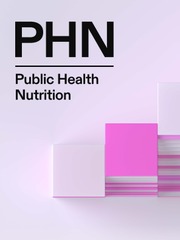No CrossRef data available.
Article contents
Food insecurity and employment income: considerations regarding gender inequalities
Published online by Cambridge University Press: 25 September 2025
Abstract
To investigate the associations among income from work, the gender of the reference person, family and food insecurity (FI).
This quantitative study used nationally representative data from the 2018 Brazilian Family Budget Survey.
The analyses estimated levels of food security and insecurity measured by the Brazilian Food Insecurity Scale according to labor income determined by the minimum wage per capita (MWPC) and the sex of the reference person (female/male). The logistic regression model measured the interaction between work income and gender in association with household FI.
Brazilian families living in permanent households with at least one resident earning income from employment (n=48,625).
Households headed by women and with labor income ≤¼ MWPC had the highest percentage of moderate/severe FI (29.7%). In these families and households with lower levels of employment income headed by men, the highest probabilities of moderate/severe FI were observed, at 10.8 and 9.6, respectively, compared with families with higher levels of employment income headed by men.
Lower employment income contributes to FI in families, especially those that are headed by women. The socialization of care work and the reduction in paid labor hours contribute to greater access to the labor market for women and a lower likelihood of FI.
Information
- Type
- Research Paper
- Information
- Creative Commons
- This is an Open Access article, distributed under the terms of the Creative Commons Attribution licence (http://creativecommons.org/licenses/by/4.0/), which permits unrestricted re-use, distribution and reproduction, provided the original article is properly cited.
- Copyright
- © The Author(s), 2025. Published by Cambridge University Press on behalf of The Nutrition Society

